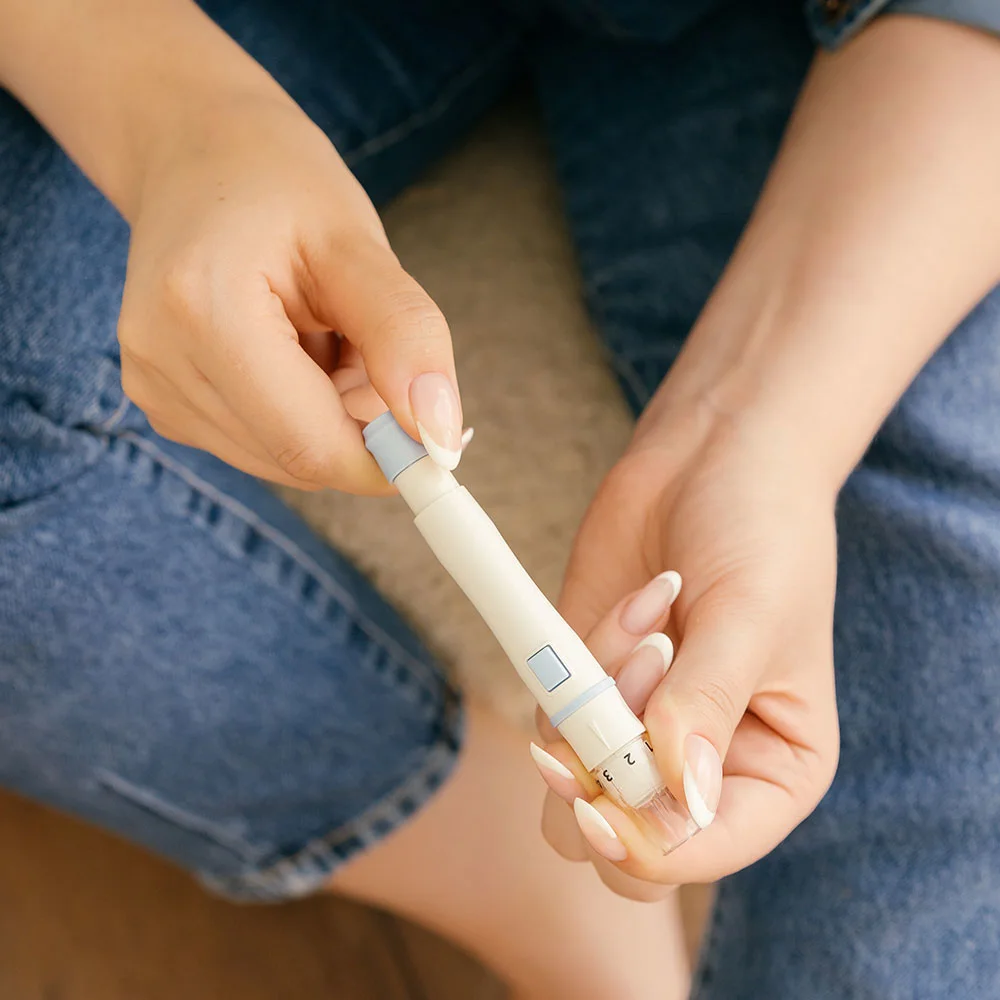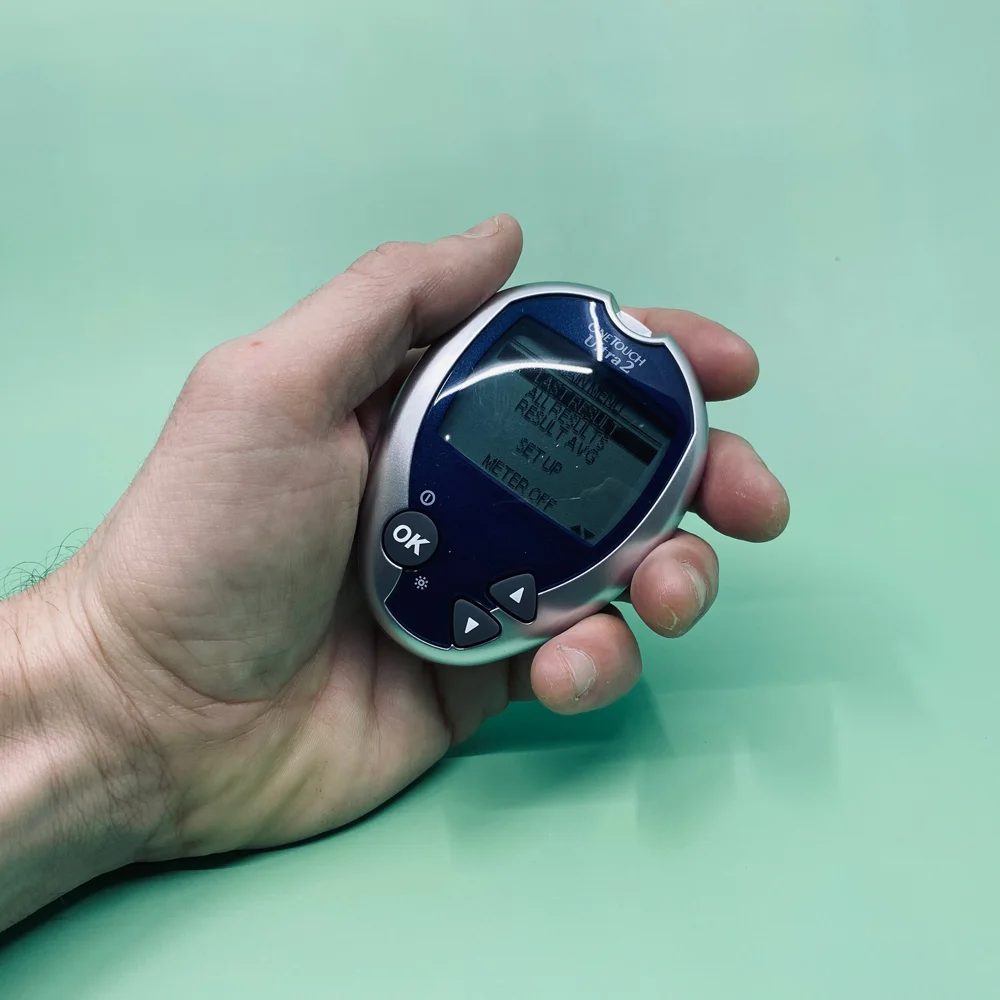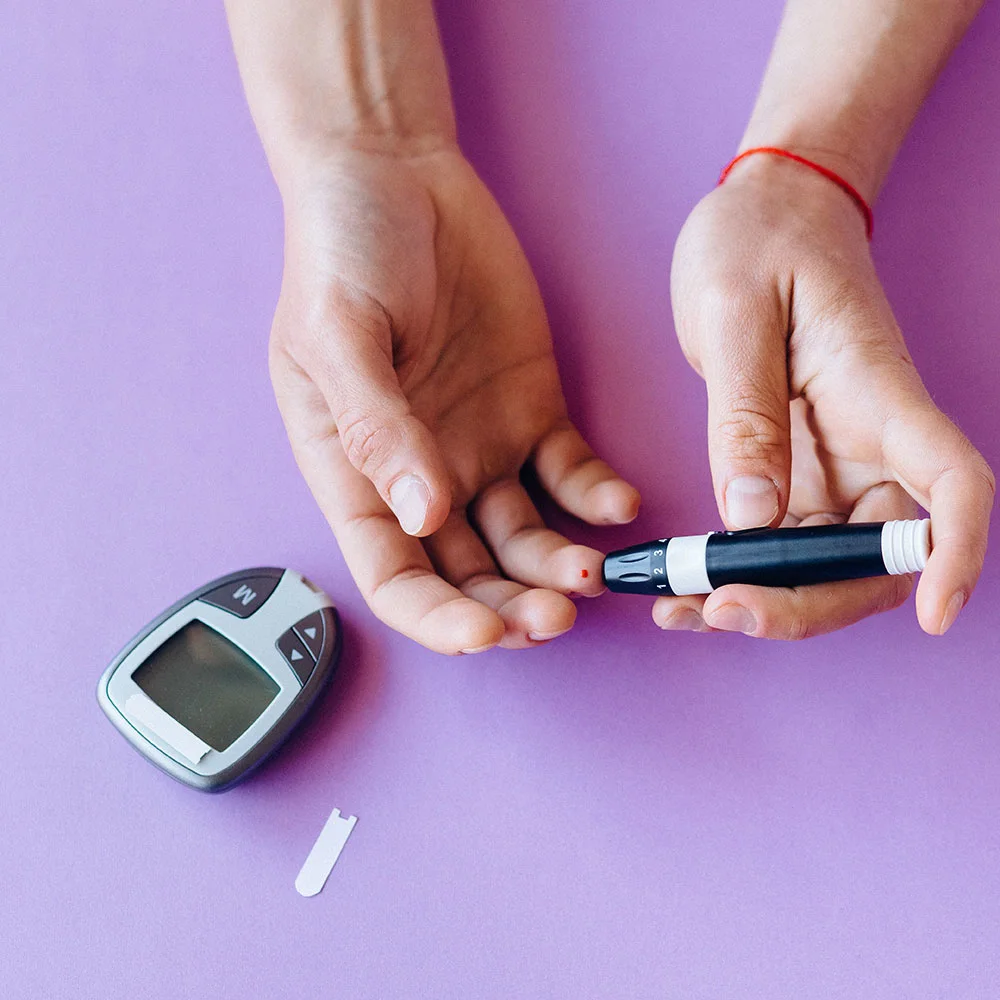Here's what we'll cover
Here's what we'll cover
Here's what we'll cover
Chances are, you’ve heard about diabetes. You may have heard somebody say the word “diabetes” on the television. You may have a friend who’s talked about diabetes. You may have come across an ad that has the word “diabetes” written in it. Point being, the word “diabetes” is everywhere in our society, and it’s likely only going to become more frequent as the number of people with diabetes increases.
What you may not have realized, though, is that “diabetes” is not just one disease. While most people use the word to refer to type 1 diabetes mellitus (T1D or T1DM) and type 2 diabetes mellitus (T2D or T2DM), other diseases share the name as well. Gestational diabetes refers to diabetes that is brought on by pregnancy. Diabetes insipidus is an unrelated disease that is due to an issue with the hormone ADH (rather than an issue with the hormone insulin).
Still, even using “diabetes” to refer to both types of diabetes mellitus can be misleading. While both diseases may clinically look similar and have many of the same symptoms and long-term effects, they are in fact, caused by two separate processes. The diseases also affect different populations, have different risk factors, and may be treated differently. This means that knowing exactly which “diabetes” people are talking about can be of the utmost importance.
What is the main difference between type 1 diabetes and type 2 diabetes?
While the outcome is nearly the same, T1DM and T2DM are fundamentally different when you take a look at what is going on in the body. Both conditions represent an issue with the hormone insulin, however:
Type 1 diabetes mellitus is a disease in which the body stops making insulin
Type 2 diabetes mellitus is a disease in which the body does not respond as well to insulin
To give you some context: Insulin is a hormone that is released by the pancreas, an organ that sits behind the stomach. Insulin’s primary purpose is to help regulate blood sugar (also called blood glucose). When you eat food, your blood sugar levels rise. In response to this rise, insulin is released into the bloodstream. Insulin then binds to receptors on fat, muscle, and liver cells, allowing those cells to take up glucose and either use it for energy or store it for later use. These effects lower blood sugar back down into the normal range.
In T1DM, the pancreas is not making insulin and therefore is not releasing it into the bloodstream. In T2DM, the pancreas is still making insulin and releasing it into your bloodstream, but your tissues are less sensitive to it. After a time, the pancreas can get “burned out” in T2DM and can have difficulty making enough insulin as well, but this is not the primary cause of the disease.
T1DM used to be referred to as juvenile diabetes or juvenile-onset diabetes since most diagnoses are made in childhood. The most common ages of diagnosis are 4-6 years old and 10-14 years old. However, 1 in 4 diagnoses of new-onset T1DM is made in adulthood. It is also sometimes referred to as insulin-dependent diabetes.
T2DM used to be referred to as adult-onset diabetes since being over the age of 45 is a risk factor. However, paralleling the childhood obesity epidemic, 20-50% (depending on location) of the new diabetes diagnoses being made in children now are T2DM. It is also sometimes referred to as non-insulin-dependent diabetes.
T2DM is the more common form of diabetes mellitus and accounts for approximately 90-95% of all cases.
How do type 1 and type 2 diabetes differ in terms of their causes?
T1DM is an autoimmune disease, which means that the body is attacking itself. In people with T1DM, the body’s immune system creates antibodies that attack the parts of the pancreas that make insulin, known as the beta cells. Once damaged, the beta cells stop producing insulin. Although we know that this is what is going on, researchers still aren’t sure why this happens.
There seems to be a genetic component, and certain blood tests can be done to look for specific antibodies (such as GAD-65, IA-2, IAA, ICA, and ZnT8). However, not all patients with T1DM have these antibodies. There also seems to be an environmental component, with many researchers believing that certain exposures, like exposures to viruses, contribute to T1DM. T1DM is likely caused by a combination of multiple factors and not any singular thing.
T2DM, on the other hand, is caused by insulin resistance and the pancreas’s inability to keep up with the insulin needs of the body. “Insulin resistance” refers to the body’s tissues being less sensitive to insulin’s effects, as discussed earlier. Many things may contribute to insulin resistance, including genetics, fat distribution, and living a sedentary lifestyle. While many people believe obesity directly causes T2DM, the truth is that not all people who are obese develop T2DM and not all people with T2DM are obese. Like T1DM, T2DM is likely caused by a combination of multiple factors.
How do type 1 and type 2 diabetes differ in terms of their risk factors?
Since the actual cause of T1DM is not well understood, the risk factors are also difficult to parse out. Family history is one definite risk factor, meaning if you have a close family member with T1DM, the chances of you developing T1DM are higher. Other possible risk factors include:
Being the age when most diagnoses are made (4-6 and 10-14)
Exposure to viruses (although which viruses are not well known) geography (certain countries have much higher rates—even latitude may play a role) (UpToDate2019)
Lifestyle
The risk factors for developing T2DM are much better understood. These are generally broken down into the things you can change and the things you cannot change. Things you can change include being overweight, having a large waist size, eating an unhealthy diet, not exercising, and smoking. Things you cannot change include:
Age >45, race (non-Hispanic whites have the lowest risk),
Family history
Personal history of certain medical conditions, including:
Acanthosis nigricans (darkening of the armpits and neck)
Gestational diabetes (diabetes brought on by pregnancy)
Hypertension (high blood pressure)
How do type 1 and type 2 diabetes differ in terms of their treatment?
Treatment is another way in which T1DM and T2DM may differ significantly. While the goal of diabetes treatment in each is to achieve better glucose control, the means of getting there may look very different.
The mainstay of treatment for T1DM is insulin therapy. Since people with T1DM no longer produce insulin, they need to use insulin, every day, no questions asked. In fact, before the development of insulin as a treatment in the 1920s, T1DM was 100% fatal because, without insulin, the body cannot function. Nowadays, insulin can be given as a standard insulin injection, through an insulin pump, or by using an insulin pen, which may be more user-friendly. Insulin comes in a variety of forms that last for different amounts of time in the body. Everybody with T1DM should be intimately familiar with their insulin regimen and should regularly check their blood glucose levels to ensure adequate control.
Some people with T2DM may also require insulin for treatment. However, this typically only occurs later in the disease or when other treatments have failed. This is because people with T2DM are still able to make insulin, so therapy does not need to depend on giving it to them. Instead, oral medications are typically prescribed first in the treatment of T2DM.
One of the most well-known medications, and often the first prescribed is called metformin (brand name Glucophage). Metformin is a type of medication known as a biguanide, and it works by decreasing the amount of sugar released from the liver into the bloodstream and making the body more sensitive to insulin.
Many other classes of oral diabetes medications also exist, including alpha-glucosidase inhibitors, bile acid sequestrants, dopamine-2 agonists, DPP-4 inhibitors, GLP-1 receptor agonists, meglitinides, sulfonylureas, SGLT2 inhibitors, and thiazolidinediones. Many of these medications can be used alone or in combination and work through a variety of channels, which are all geared towards decreasing blood sugar levels.
Management of T2DM also depends on lifestyle modifications. This includes weight loss, eating healthier, engaging in regular exercise, and quitting smoking.
Despite these differences in medications, there are similarities in how T1DM and T2DM are managed. Since both diseases have many of the same long-term complications, people with T1DM and people with T2DM should both undergo routine screening for:
High blood pressure (hypertension)
High cholesterol (hyperlipidemia)
Eye problems (including a fundoscopic exam for diabetic retinopathy)
Nerve problems (including foot exams for diabetic neuropathy)
Kidney problems (including a urine test to look for protein, which is a sign of kidney damage)
How do type 1 and type 2 diabetes differ in terms of their prognosis?
T1DM and T2DM are both risk factors for many other diseases, including but not limited to heart attack, stroke, other heart diseases, other issues with the blood vessels, amputations, chronic kidney disease, dementia, depression, and cancer. As such, it is very important for people with both T1DM and T2DM to be regularly connected to the healthcare system, to stay compliant with all medications, and to stay up to date with all recommended screenings.
The prognosis for T1DM and T2DM is highly variable. One report from the UK suggested that people with T1DM have a life expectancy that is reduced by more than twenty years and that people with T2DM have a life expectancy that is reduced by up to ten years (Diabetes, 2010). A Canadian study found that, at the age of 55, diabetes shortened life expectancy in men by six years and in women by five years (Loukine, 2012).
These numbers may seem scary. However, the important thing to keep in mind is that how long somebody can live with T1DM and T2DM is highly dependent on several factors. These include the age of diagnosis, how long the disease went undiagnosed, how well diabetes is controlled, and how effectively the complications of diabetes are discovered and managed.
One study found that, in T2DM, life expectancy could vary by as much as approximately eight years, depending on factors that are tied to lifestyle changes alone (Leal, 2008). If you have T1DM or T2DM, talk to your healthcare provider, and educate yourself about the disease to make sure you are doing everything you can to maximize your life expectancy and live that life to the fullest.
DISCLAIMER
If you have any medical questions or concerns, please talk to your healthcare provider. The articles on Health Guide are underpinned by peer-reviewed research and information drawn from medical societies and governmental agencies. However, they are not a substitute for professional medical advice, diagnosis, or treatment.
References
Diabetes UK. (2010). Diabetes in the Uk 2010: Key statistics on diabetes . Retrieved from https://www.diabetes.org.uk/resources-s3/2017-11/diabetes_in_the_uk_2010.pdf
Leal, J., Gray, A. M., & Clarke, P. M. (2008). Development of life-expectancy tables for people with type 2 diabetes. European Heart Journal , 30 (7), 834–839. doi: 10.1093/eurheartj/ehn567. Retrieved from https://www.ncbi.nlm.nih.gov/pubmed/19109355
Loukine, L., Waters, C., Choi, B. C., & Ellison, J. (2012). Impact of diabetes mellitus on life expectancy and health-adjusted life expectancy in Canada. Population Health Metrics , 10 (1). doi: 10.1186/1478-7954-10-7. Retrieved from https://www.ncbi.nlm.nih.gov/pubmed/22531113
UpToDate. (2019). Epidemiology, presentation, and diagnosis of type 1 diabetes mellitus in children and adolescents. Retrieved from https://www.uptodate.com/contents/epidemiology-presentation-and-diagnosis-of-type-1-diabetes-mellitus-in-children-and-adolescents












